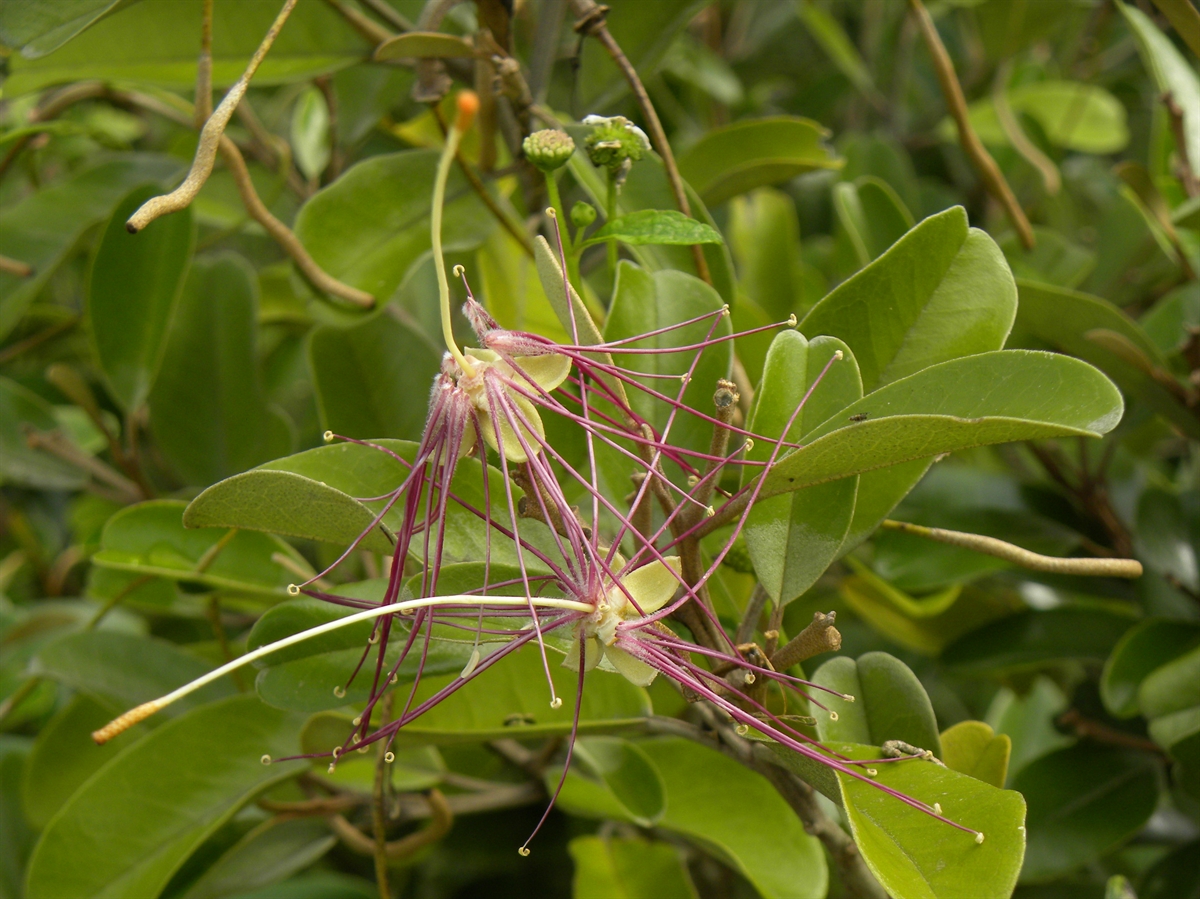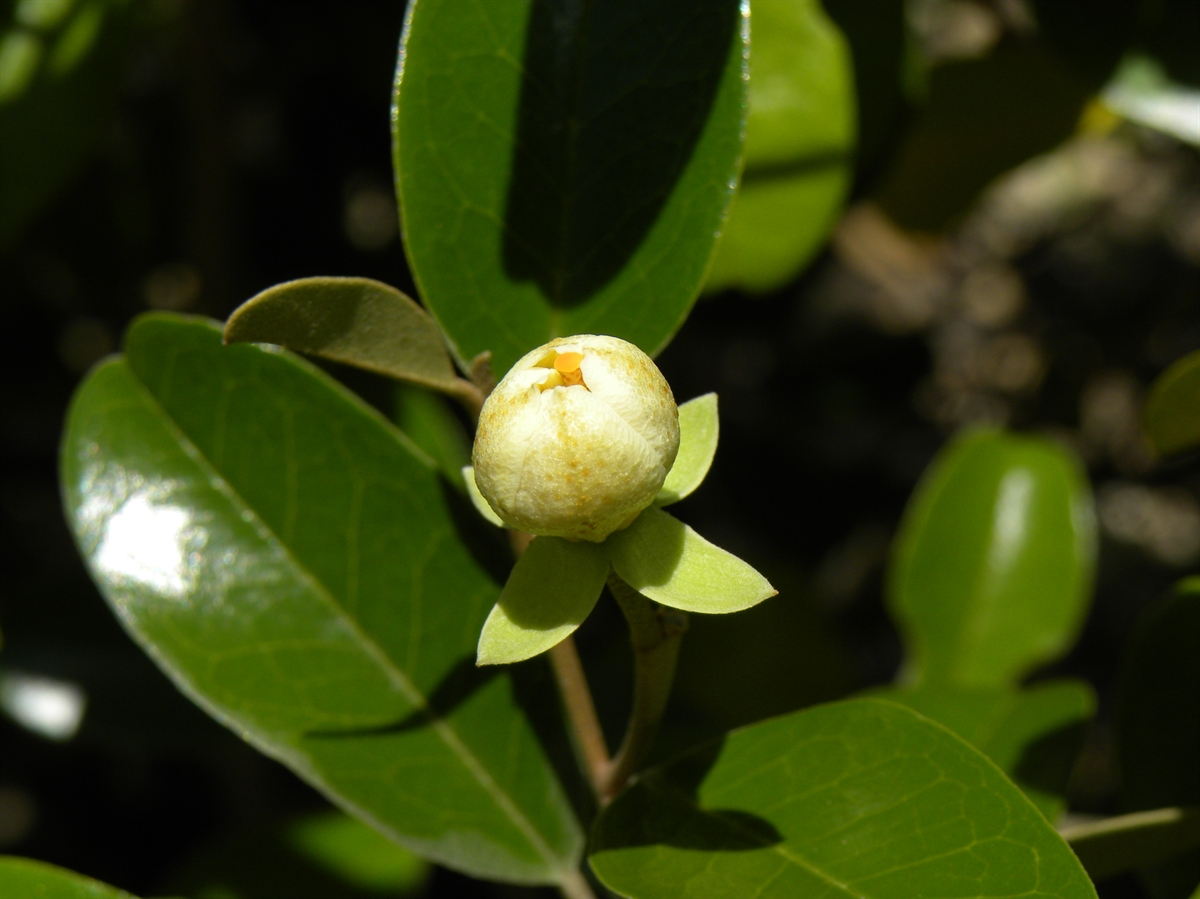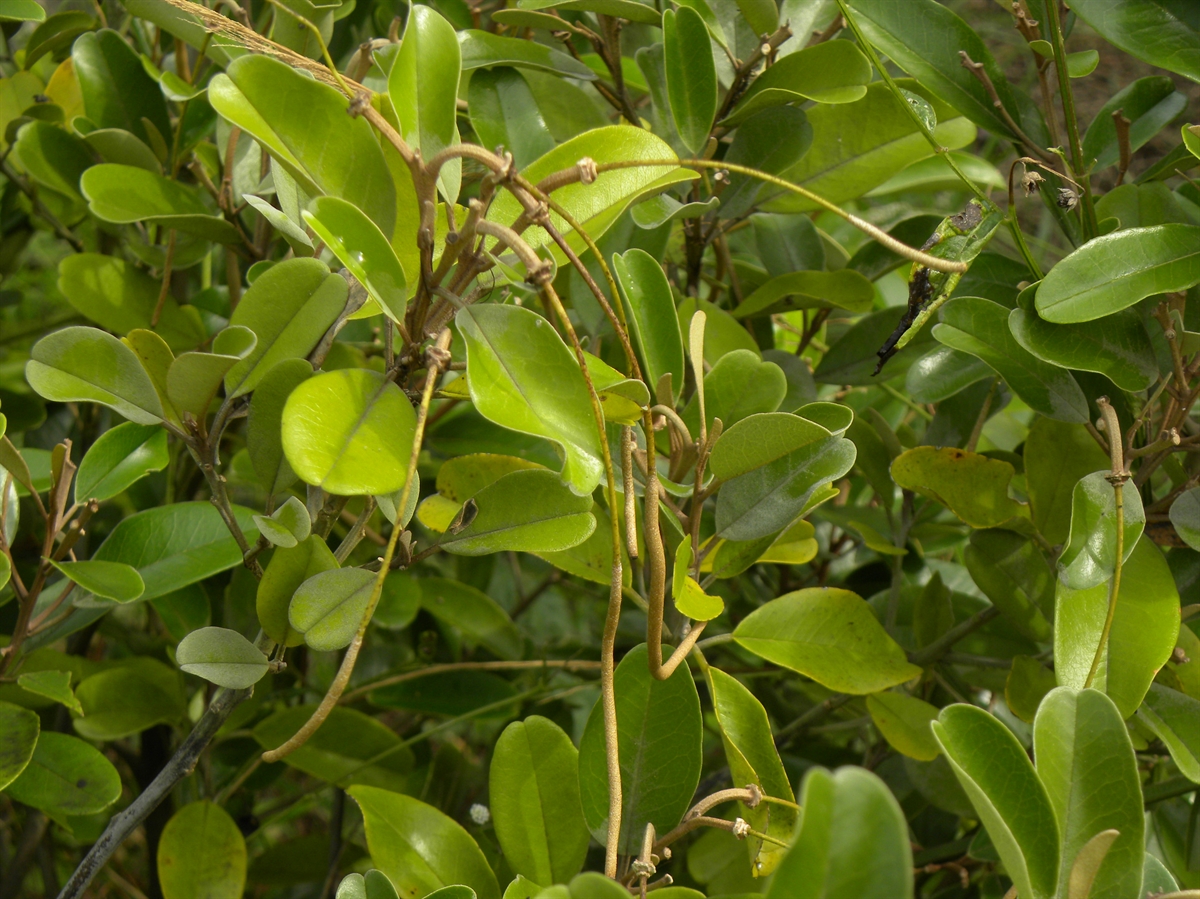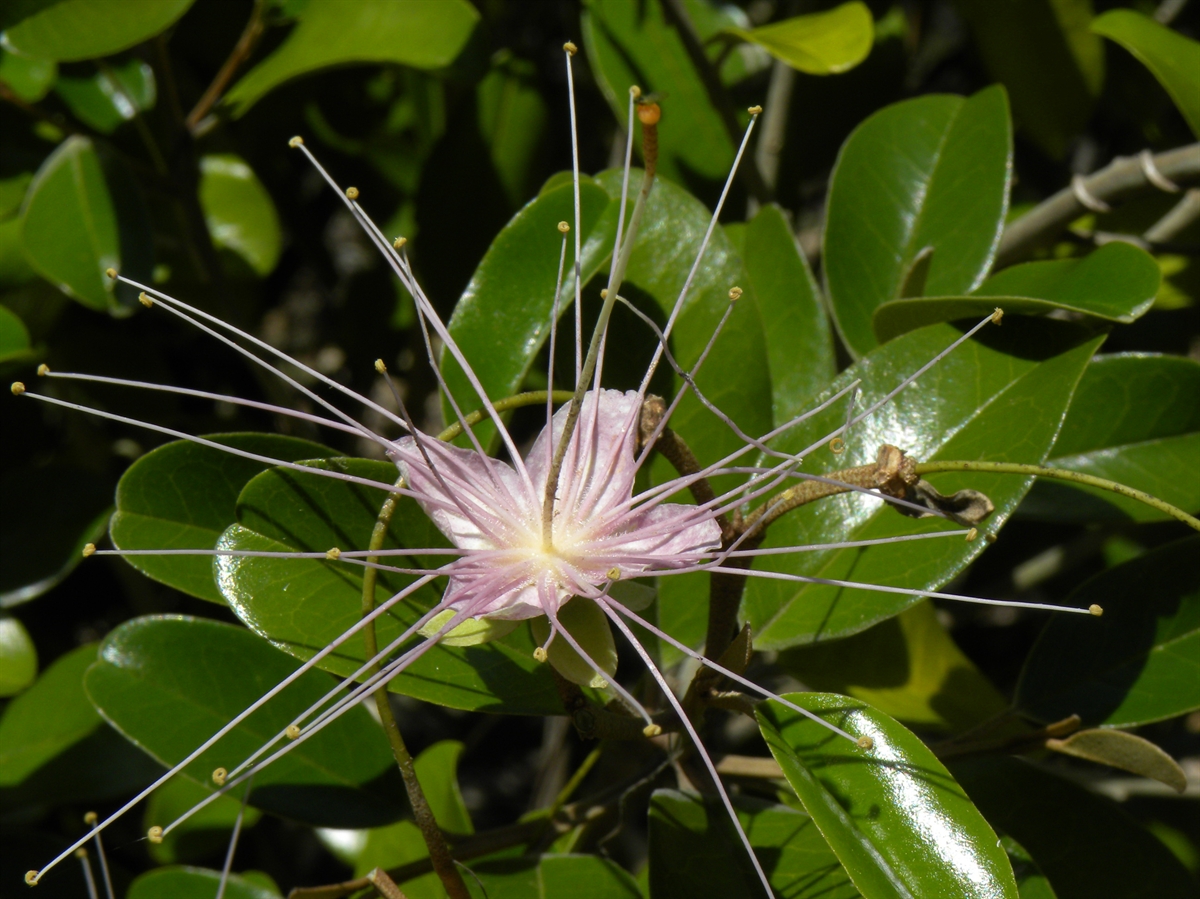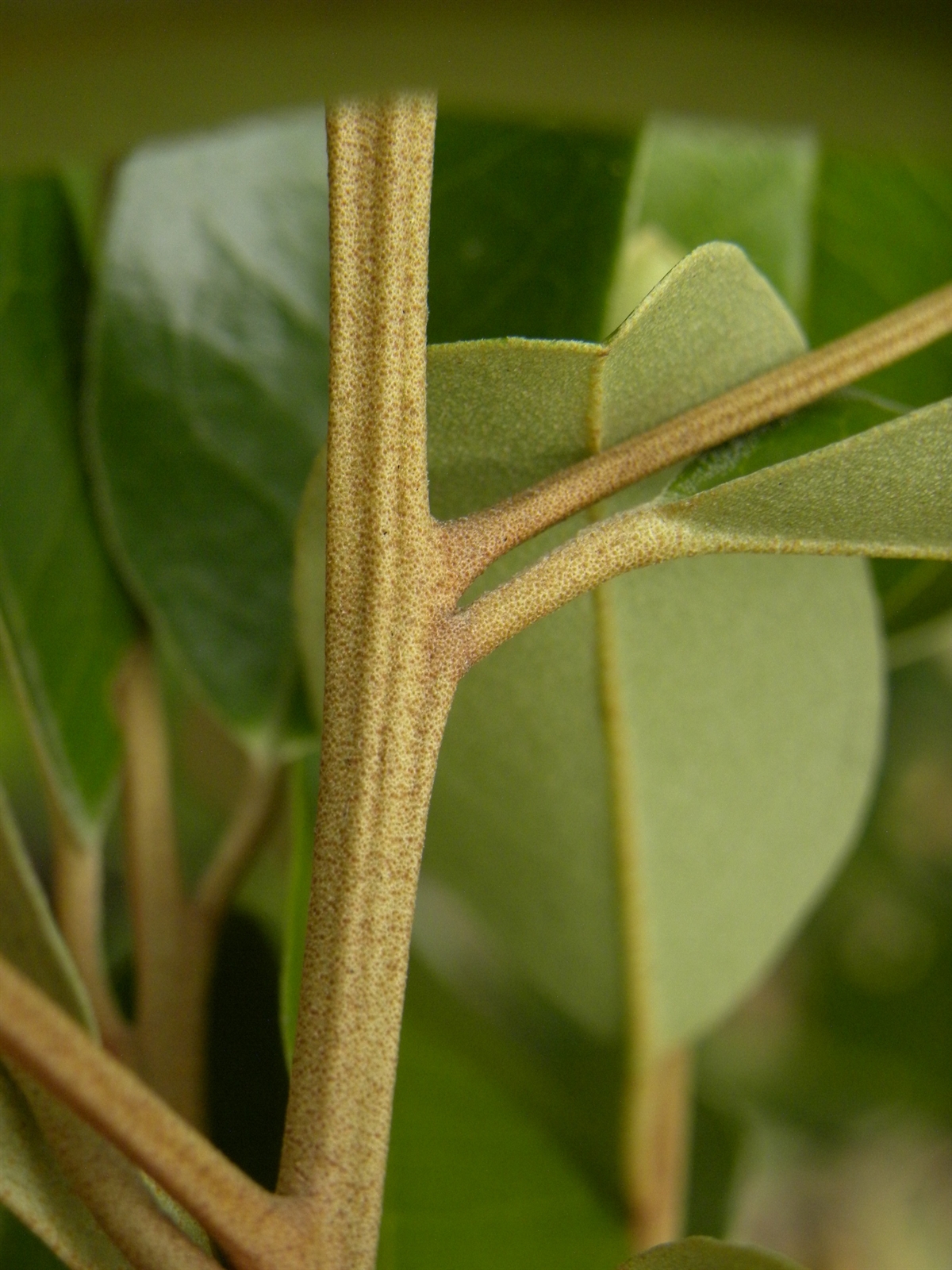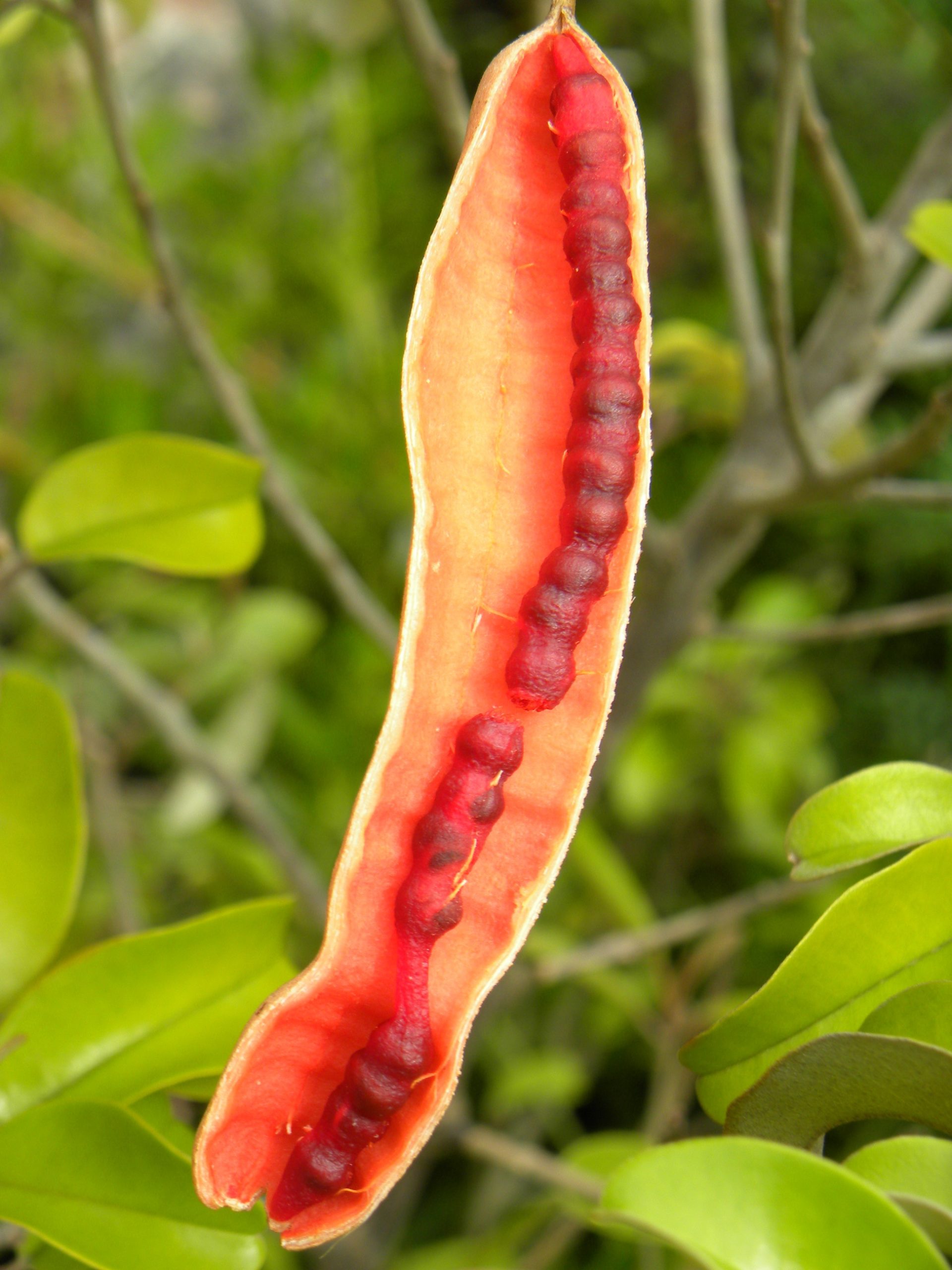Habit: Morisonia cynophallophora grows as a large shrub to small tree up to 8 meters in height with red-brown bark. The leaves are arranged alternately, to 13 cm long, elliptic to oblong with an entire leaf margin and obtuse or acute leaf apex. The stems, petioles and abaxial leaf surfaces are covered with brown lepidote scales.
The complete, perfect, actinomorphic flowers are arranged in racemes. All parts of the flower have lepidote scales. The calyx has 4 brown, unfused sepals. The corolla has 4 white to pink, unfused petals. There are numerous stamens that are 3-4 times the length of the corolla and range from white to purple to bright red. The ovary is superior with a single locule and numerous seeds. The fruit is a silique to 20 cm in length that is slightly constricted between the seeds.
Habitat: Morisonia cynophallophora grows in Dry Broadleaf Evergreen Formation – Woodlands/Shrublands (scrublands).
Distribution: Morisonia cynophallophora occurs on almost all island groups within the Lucayan Archipelago as well as Florida, the entire Caribbean region and Mexico south to northern South America.
Medicinal/Cultural/Economic usage: Morisonia cynophallophora is not used medicinally in the Lucayan Archipelago.
Morisonia cynophallophora is used in the horticultural industry for its beautiful and fragrant flowers that are good to attract birds and butterflies.
